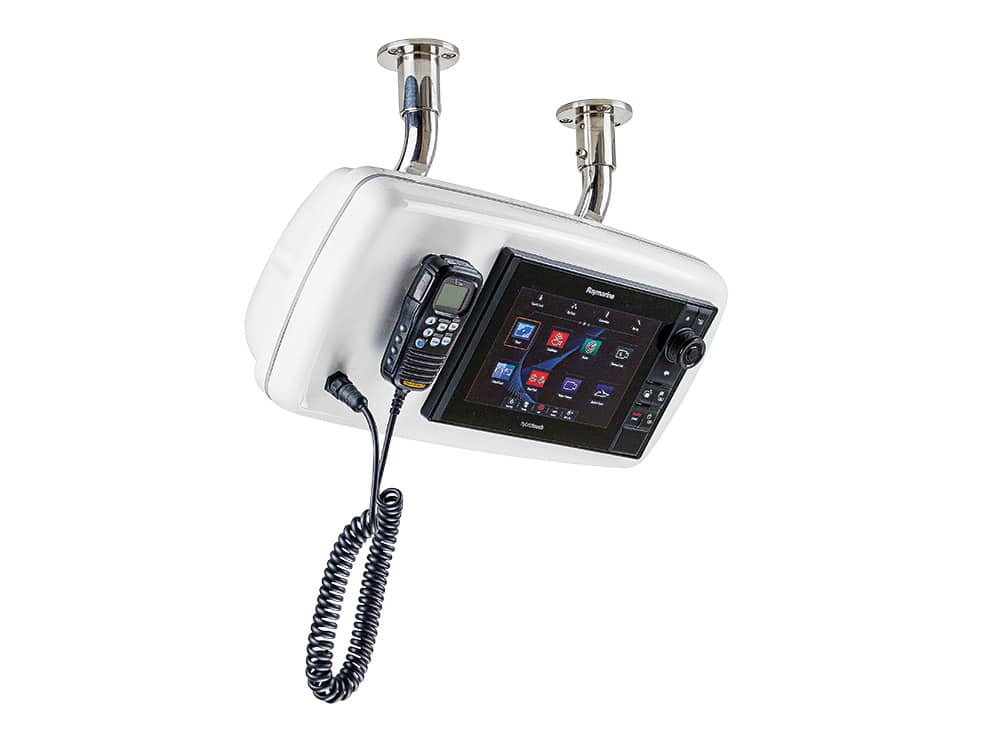
Recently, I wanted to add another marine electronics display, a super-sensitive sea-surface-temperature gauge, to my helm station. But there was a problem: I had no space left. Just about every square inch was occupied by a display, gauge, or switch panel.
The solution dawned on me when I glanced upward at a crossbar in the hardtop frame above the helm. It was there that I decided to secure a small box fashioned from King Starboard marine lumber in which I could install the 4.3-inch square gauge. Problem solved.
A key element for installing the box was an Edson Horizontal Rail Accessory Mount — a robust, elegantly simple, stainless-style mounting system that lends itself to all kinds of options for adding new electronic displays and antennas. In this case, it allowed me to easily secure the box to the crossbar.
But that isn’t the only option. There are many ways to make room for new electronics, from pod and pedestal mounts, to overhead compartments and black-box solutions that let you use existing displays for additional functions.
Pod Cast
If you can spare a small space on a horizontal or slightly angled surface at the helm, you can add a relatively large display using a pod-mounting system. Ocean Equipment’s PowerPod 5200 Gen3 series (about $530), for example, requires only an 8⅛-inch-diameter footprint, yet it accommodates flush-mounted electronic displays as big as the Garmin 7412.
Another choice is the PYI SeaView Power Pod series. The model POW-3-UC (about $300) needs only a 4-inch-diameter footprint, and it accommodates models as large as the Raymarine e125 flush-mounted in the pod face.
Bases for both brands pivot and articulate fore and aft as well as side to side, making the angle of the displays adjustable for optimal viewing. The backs of the displays, fully enclosed by the plastic pods and sealed to prevent water intrusion, are a big benefit on a boat with an exposed helm.
On a Pedestal
Pod systems elevate the mounting box from 3 to 4 inches above the installation surface, but that might not be sufficient to clear other elements at the helm. In this case, you might consider a pedestal mount. One of the most extreme is Ocean Equipment’s PedestalPod (about $380). It requires a 5-inch-diameter footprint but handles up to 12-inch displays in a sealed pod atop a 20-inch-tall powder-coated aluminum pedestal tube that’s angled at 45 degrees.
If you want less elevation, consider a RAM Mounts pedestal-mounting solution (about $50) for marine electronics. RAM uses its famous ball-and-socket system for easy adjustment and removal of electronics, and the pedestal bases require only a 2½-inch-diameter footprint. RAM also offers plates that let you bracket-mount a display atop the pedestal arm. Arms come in 3- and 6-inch lengths, with extensions and swivel arms available.
RAM also offers mounting systems for your boat for mobile devices like tablets and smartphones.
On Rails
A wide range of rail-mount solutions for marine electronics are available through brands such as Edson, RAM, ScanStrut, SeaView and West Marine. Edson offers not only the Horizontal Rail Accessory Mount but also Clamp-On Accessory Mounts, with base adjustability to suit vertical or angled rails. There are 3- and 7-inch stainless-steel bases available (around $109 and $120, respectively).
The rail-mount systems also mate with Edson’s Electronic Display Housings (starting at about $215), which come in a range of sizes. RAM also offers a variety of rail-mount bases that work with its ball-and-socket system, and SeaView carries clamp systems to connect its Power Pod instrument housings to horizontal rails.
Looking Up
Hardtops offer additional opportunities for adding electronics above the helm. Ocean Equipment capitalizes on this with its SK129 stanchion kit (about $250) that lets you securely hang an instrument box such as the GP1040 System Pod (about $460) from the ceiling of the hardtop. This particular pod accepts displays as large as the Simrad NSS-8.
Another option is to add an overhead electronics box from a brand such as SSi Plastics, Stryker or Todd. Among the most popular today is SSi’s 691-GRD6030-00 low-profile overhead box (about $630). At 30½ inches wide by 18¾ inches deep and 8½ inches tall, this box includes a vertical surface for flush-mounting one or more displays and a storage box where you can bracket-mount an item such as a VHF radio. The underside features two angled surfaces for flush-mounting a pair of stereo speakers. Model 691-GRD4030-00 is similar but a bit wider (nearly 3 feet) for larger hardtops.
Space Saver
There is a way to add a marine electronics multifunction display without adding a display. For instance, if you already have a Furuno NavNet TZtouch and TZtouch2 MFD, you can add the new DFF-3D black box and transducer ($3,995) to get advanced features without the need for another display. The black box mounts behind the helm and integrates with the MFD via NMEA 2000 cable connections.
Marine stereo brands have also jumped on the black-box bandwagon to help save space, allowing anglers to devote valuable helm real estate to electronics that actually help find more fish.
With Fusion’s MS-BB300R (about $480 without speakers or amp), you get complete control of the boat’s audio system through your MFD, thanks to NMEA 2000 network compatibility with most major brands. This system comes with a compact wired remote, but many captains choose to mount this control in an interior space instead of the helm.
Other marine stereo brands offering NMEA 2000-compatible black-box systems include Clarion, Infinity, JL Audio and Rockford Fosgate.
The next time you decide there’s no space left to add marine electronics, take a look at these ideas and you’ll find there’s always room for more.
Four Ways to Make Room
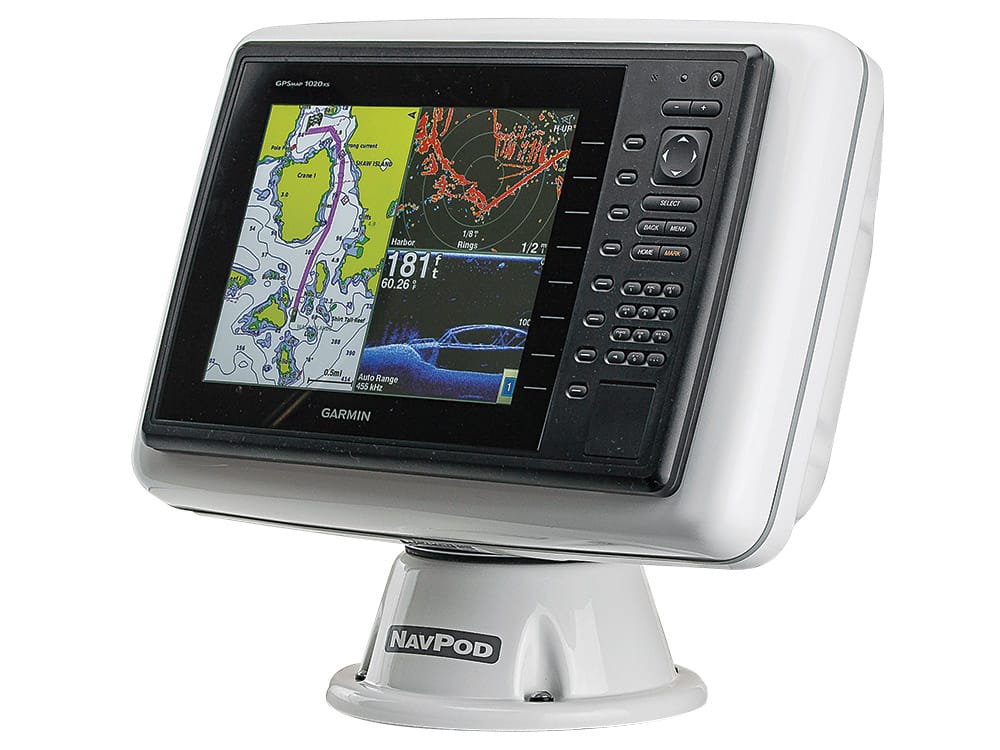
Ocean Equipment’s Gen3 PowerPod
Ocean Equipment’s Gen3 PowerPod requires just an 81⁄8-inch footprint.
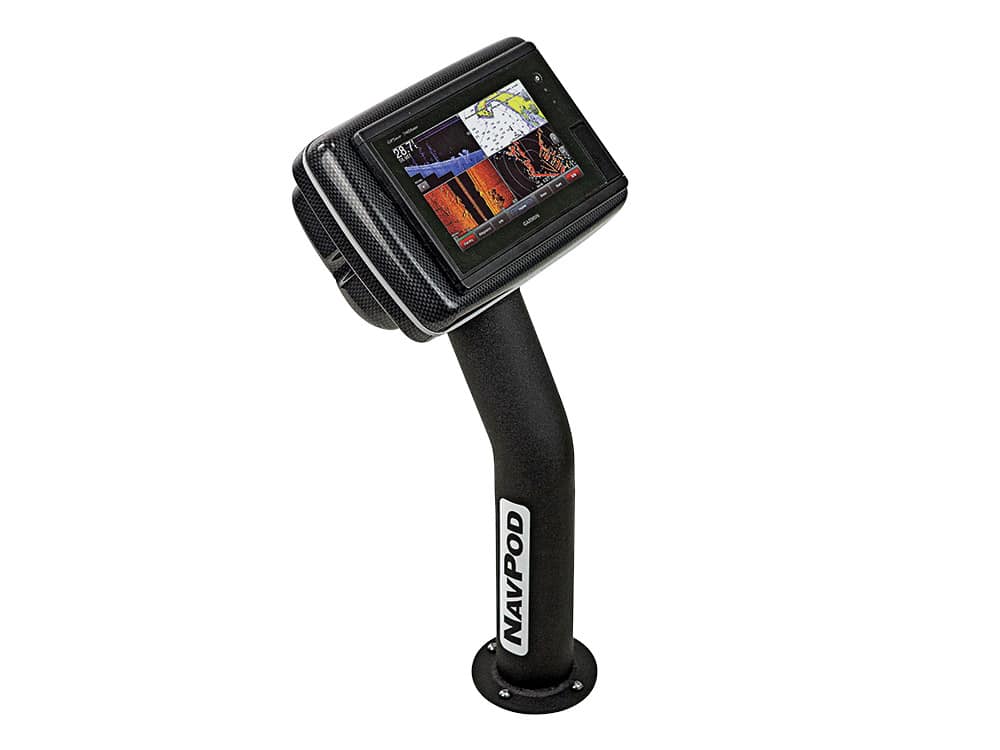
The PedestalPod from Ocean Equipment offers 20 inches of elevation to create more room.
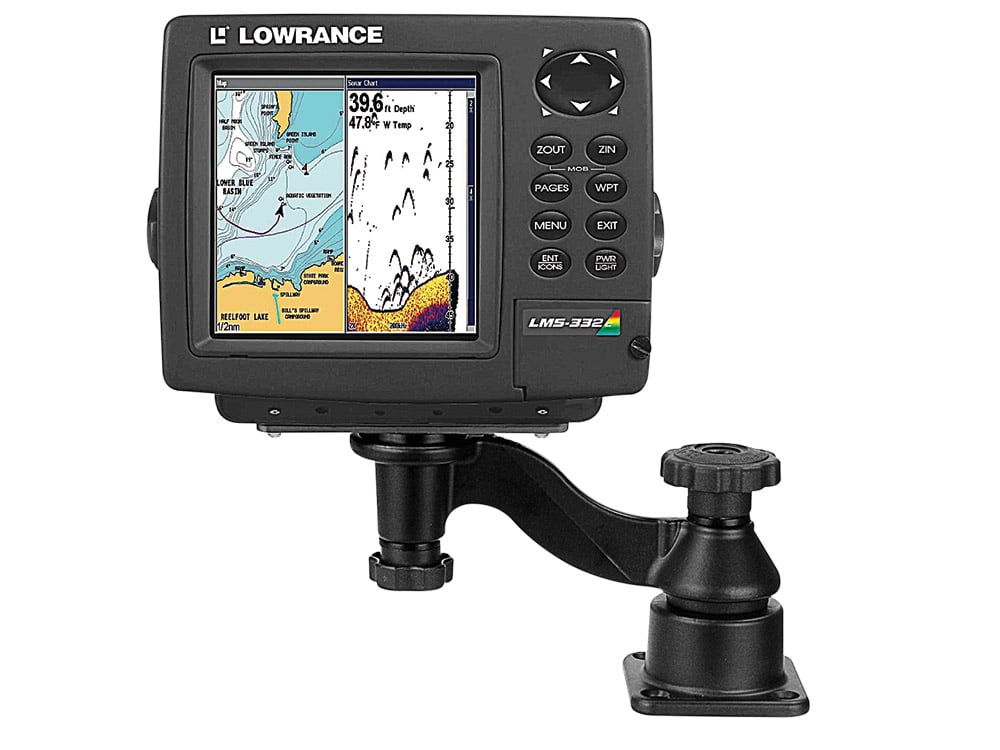
swivel-arm pedestal
The swivel-arm pedestal from RAM Mounts lets you swing and pivot a display.
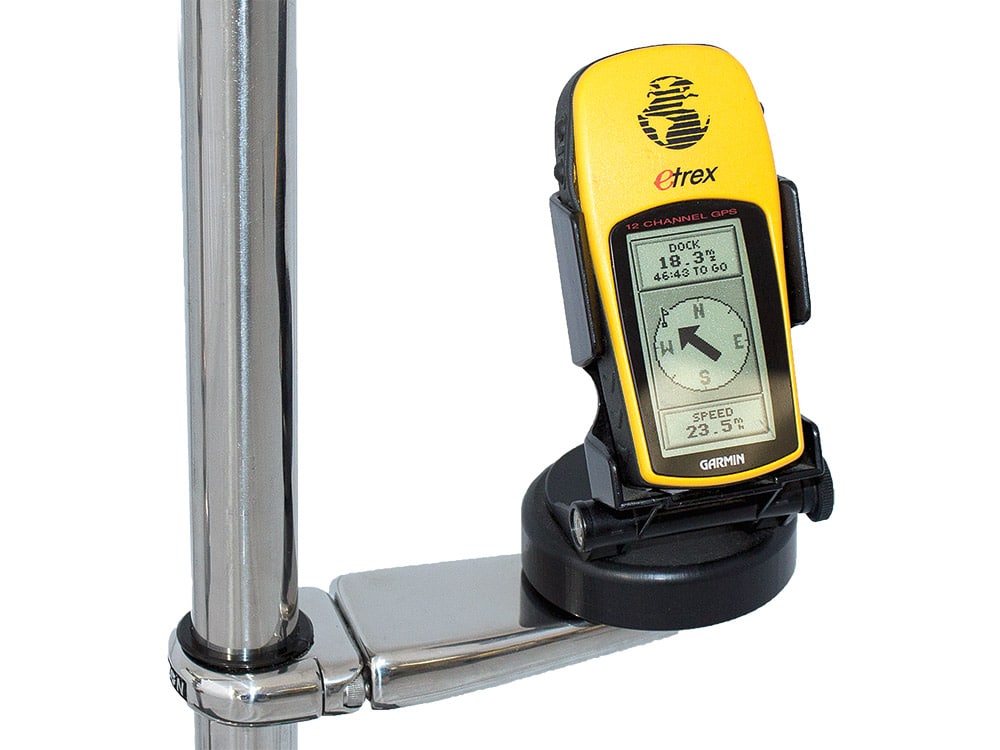
Edson’s clamp-and-arm system lets you use a rail stanchion to mount electronics.









